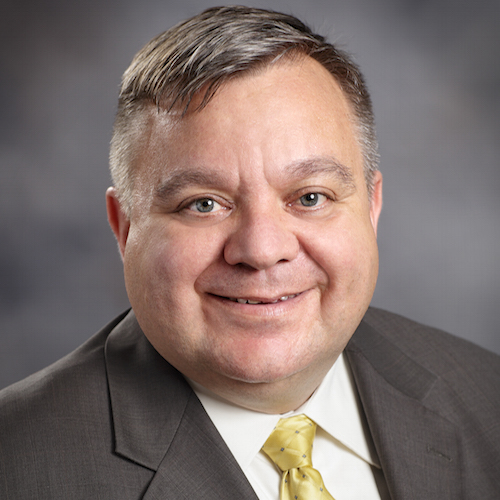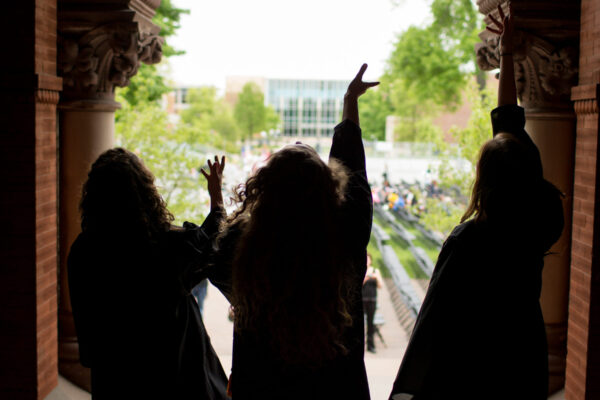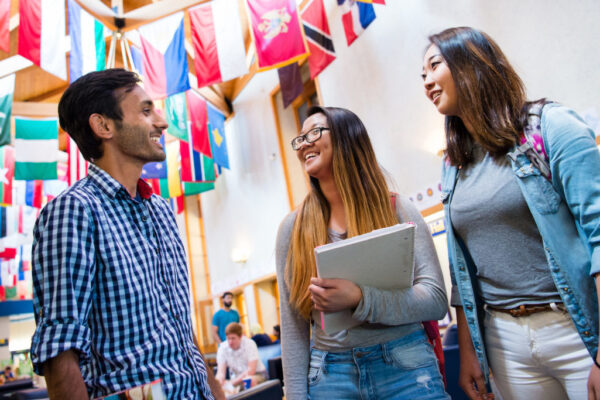By Thomas J. Botzman
The pace of change in higher education used to be seen as glacial, slow or barely perceptible. Today it is more akin to a hurricane, and winds and water are changing the landscape as we speak.
The forces at play are a demographic shift that includes fewer high school graduates, increased regulatory and governmental interventions, new competitors that do not adhere to traditional geographic and pricing boundaries, and, of course, technology that changes nearly every day. It is, as many have noted, a perfect storm. So, can our ships crest the wave? I believe that they can. I’ve decided that my preference is to see the rapid changes as part of an “imperfect” storm with a brighter future on the other side.
Self-preservation, for both universities and those who work there, demands that we stay away from both perfect and imperfect storms. But with a shared vision, interdisciplinary planning, wise investments in technology, and diversification in the students we serve, I believe we can navigate an imperfect storm successfully. One of my favorite places to model a storm, without the danger of actually entering a hurricane, is Grand Central Station. Standing completely still near the big clock during rush hour, one is surrounded by the constant commotion that results in, oddly enough, an ability to calmly think about the rapidly moving world. It’s a great place to contemplate our imperfect future.
Navigating the Intersections
One of the first observations as the commuters move by is that they don’t often bump into each other but do meet at the appropriate intersections to continue their journeys. In higher education, academic and administrative departments are often organized as silos, or “cylinders of excellence,” that seek to avoid collisions; however, we need to encourage them to intentionally meet at the correct spots to travel to a shared destination. For example, at Misericordia University, we recently completed a new mission and values statement and strategic plan that point us all in the same general direction.
Our university has a strong historical commitment to the allied health sciences, including nursing, physical therapy, medical imaging, occupational therapy and speech-language pathology—over 40 percent of our students are in a health care field. Within a focus on expanding our allied health care offerings, we added a new patient navigation certificate that educates those who will help patients and their families understand the sometimes-complex treatment options and recommendations for their situation. A new certificate in sonography extends our already successful medical imaging offerings. With the new offerings, we are able to extend our competitive advantage in those fields to related career and learning opportunities, increasing both admissions and degree completions.
In a different twist, our new medical and health humanities program was built with an interdisciplinary approach among diverse fields such as philosophy, literature, science and history, to educate students with an awareness of the ethical and practical challenges facing health care. This degree is innovative, rare and expands opportunities for our students to apply a liberal arts base to real challenges and problems in a number of career paths, including medicine, dentistry, physical therapy, pharmacology, health law, public health, public policy, biomedical ethics, medical anthropology, health education, medical/pharmaceutical sales, health care administration and safety, medical/healthcare writing and related humanities disciplines.
Truly interdisciplinary majors, minors, certificates, and programs are both novel and will be a driver for change in the higher education model. Fields such as biotechemisty, cyber security, neuroscience, environmental science, and medical and health humanities are becoming increasingly widespread and accepted as new domains of study. As our world becomes more specialized, we can fully expect that the boundaries that divided academic departments will become the fountain for faculty research and scholarship that will lead to exciting and growing fields of study, just as the original liberal arts grew from the trivium to the quadrivium into its current longer list of academic pursuits.
Watching, but Not Talking, on the Cell Phones
Back at Grand Central, it is easy to spot another trend. Everyone has a cell phone. Each commuter seamlessly moves between a text, getting directions, and any number of other tasks.
The technology can be used to open a path, both practically and figuratively. In higher education, less than 10 percent of students were enrolled in an online, or technology-driven, class at the turn of the millennium. Yet less than two decades later, about 30 percent of all college students nationwide are taking an online course or degree program. At Misericordia, we offer blended courses with both in-person and online instruction, fully online degrees up to the doctoral level, and an innovative array of technology in the traditional classroom. We are not unique, but by leveraging our great strength in providing personalized attention to students with an investment in online staff and technology, our small university can serve more students in better ways.
As recently as a decade ago, most colleges and universities could clearly identify a peer-competitor group. The competitors could be geographic, perhaps within 50 or 100 miles of an institution. Large ivy-covered buildings and groups of young students signaled that we were indeed on a college campus. Today, there are offerings in shopping centers, online and even on handheld devices. The place of education has become more portable, and with it, students are more frequently moving between higher education institutions and alternative locations.
While the residential component is still prominent on many campuses, the modern student is increasingly older and has an adult life outside of the campus. Coupled with the downturn in students graduating high school, Misericordia turned to a historic strength of serving the education needs of working adults. Corporations have negotiated agreements to have their employees return to school. With support from foundations and donors, we have attracted scholarships for adult students too. Our traditional campus of about 1,800 full-time students now hosts an additional 608 part-time undergraduates, 373 of whom in the fall semester of 2015 took at least one online course (61 percent), and 471 part-time graduate students, 202 of whom took at least one online course (43 percent).
What the Future Holds
Misericordia University is 92 years old; however, we are young and idealistic in our approach to education. For now, pointing our community toward a shared journey, encouraging interdisciplinary cooperation, and recognizing that we can—and must—serve an evolving student base, keeps the waters calm. Our approach will continue to change just as the weather does.
Higher education must monitor its environment and continue to seek new paths to explore as we seek truth and knowledge. Those paths are very likely to include new fields, domains and areas of study that we haven’t yet imagined. Nonetheless, the mission of higher education is and will continue to be driven by providing students with the tools to successfully shape the future, even in the middle of Grand Central Station or a future imperfect storm.
If you have any questions or comments about this blog post, please contact us.



